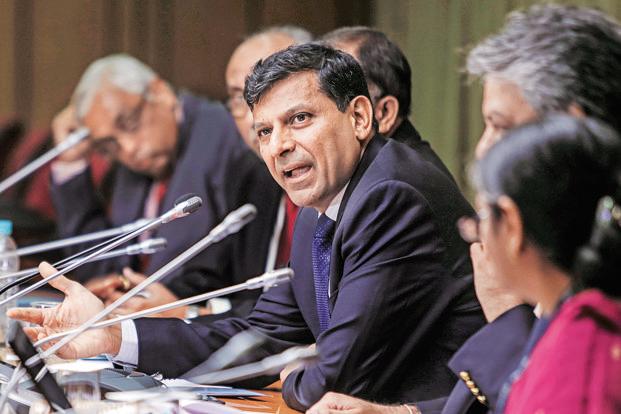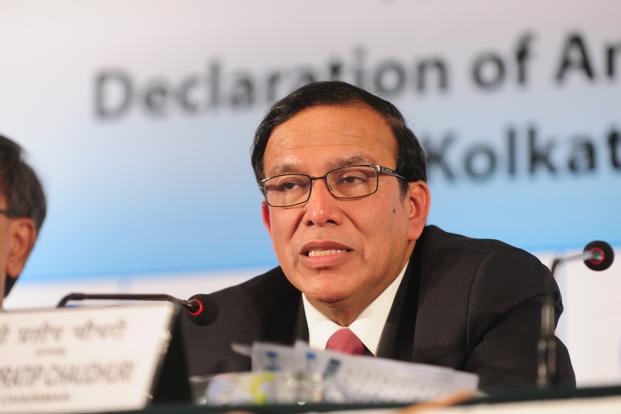On 17 July, the traded volume of the 10-year benchmark government paper rose to ₹32,450 crore, something last seen in October 2016. The volume in the bond market has started rising slowly and volatility is ebbing. It’s the return of the public sector banks in the market that has made the difference. Data show they were net sellers of government papers in the secondary market in April and May; turned buyers in a limited way in June and in July, their buying has been rising steadily. A gentle nudge by the government could be behind this but no treasury manager of a public sector bank will admit it.
The bond yields have also started stabilizing. The yield on the 10-year benchmark paper which rose to 8.03% in June, is now veering around 7.78%. Yields and prices of bond move in opposite directions. The yield curve continues to be inverted with the five-year bond yield at 7.94% but it’s driven by demand for and supply of government papers.
Till last week, ₹1.80 trillion or close to 30% of the government’s annual borrowing programme has been completed. The bid-to-cover ratio or the number of bids received for the securities being auctioned demonstrate that there are takers for the government bonds. The apprehensions of many (including this columnist) in the beginning of the current financial year when bond yields were rising that it would be difficult for the government to raise ₹6.05 trillion this year now seems to be a bit of over-reaction. Even if some of the public sector banks lose their enthusiasm for bond buying when the credit pick-up gains momentum, the primary dealers are there; they earn underwriting commission.
How long will the market remain stable? Where will the 10-year benchmark yield settle? The industry had to make huge provisions for the mark-to-market or MTM losses in banks’ bond portfolio in fiscal year 2018 as well as the first quarter of 2019. MTM refers to the accounting practice which requires a bank to value their bond portfolio at the end of every quarter at the market price and not the historical price at which the bonds were bought.
Many analysts are expecting the yield to drop further as the gap between the 10-year bond yield (7.78%) and the Reserve Bank of India’s (RBI’s) policy rate (6.25%) is too high—more than 150 basis points (bps). One basis point is a hundredth of a percentage point. This could be a bit theoretical over-simplification. Many factors will have a bearing on the bond yield and the banks’ appetite for the government papers. Loss-wary banks will use every opportunity to book profits when yields fall and exit the market. Despite the drop in their government bond holding under RBI’s stipulated statutory liquidity ratio from little over 30% of their net demand and time liability, a loose proxy for deposits, in January 2018 to around 25% now, it is still higher than the regulatory requirement.
The key to the direction of bond yield will be inflation and the policy rate trajectory in India. The one-year overnight interest rate swaps, a derivative gauge where investors exchange fixed rates for floating payments, is indicating two 25bps rate hikes in next one year.
The bond market has taken the revision in the minimum support price of kharif crops on its chin for the time being till the implications are fully known even as the impact of staggered HRA revisions by various state governments needs to be seen. My take is the oil price will hold the key. The price of Brent crude which rose to $80.5 per barrel recently is now around $72. If it goes up, bond yields will rise again as there is a correlation between the two which was snapped after the collapse of Lehman Brothers Holdings Inc. and the unconventional approach adopted by global central banks to tide over the financial meltdown but re-established in recent past.
While oil price and the threat of trade wars are to watch out for on the external front, crop loan waivers by Indian states will lead to a weakening of macro on fiscal and inflation fronts. Karnataka is the eighth state to announce a waiver in the past four years and more are likely to follow. The fiscal slippage announcement in September-October 2018 rocked the bond market boat and the government does not seem to be changing course in spite of sharp changes in global market conditions and the price of oil. If the fisc does not adjust to what is going on around, then the government will have to cough up a higher price to raise money from the market.
To iron out liquidity glitches, RBI so far bought bonds worth Rs 30,000 crore in three tranches under the so-called open market operations. We can’t expect the central bank to continue to pump in liquidity this way to “manage” the yield and enable banks’ buying bonds as this is nothing but monetizing the deficit.



